
1
Lec.1
Biology
Histology
Histology: (Gr. histo, web or tissue, + logos, study) is the study of cell and
the extracellular matrix of tissues.
A tissue : is a group of similar cells that perform a particular function.
The human body has four types of tissue:
Epithelial Tissue.
Connective Tissue.
Muscular Tissue .
Nervous Tissue .
Epithelial Tissue
Epithelial tissue is a sheet of cells that covers a body surface or lines a body
cavity. Two forms occur in the human body:
1) Covering and lining epithelium– forms the outer layer of the skin;
lines open cavities of the digestive and respiratory systems; covers the
walls of organs of the closed ventral body cavity.
2) Glandular epithelium– surrounds glands within the body.
Characteristics of epithelium :
1. Cells are close to each other.
2. Cells tend to form junctions.
3. Little intercellular material.
4. Lines surfaces and cavities or form glands.
5. Cells show polarity( apical , lateral , and basal surfaces).
6. Rest on a basement membrane .
7. Does not contain blood vessels.
8.Epithelia have the ability to undergo mitosis and replace damaged cells.
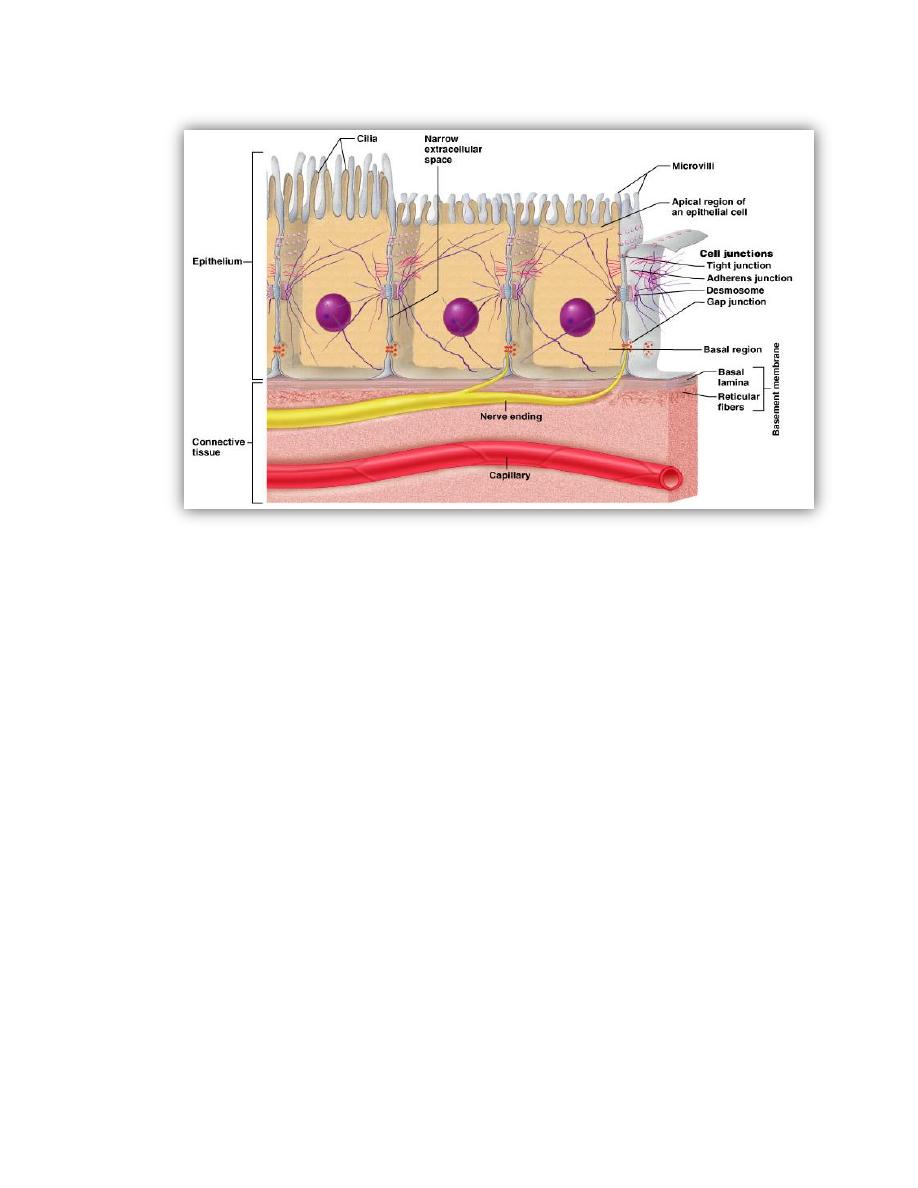
2
(Special Characteristics of Epithelia)
Functions of epithelial tissues
(1) To protect the tissues that lie beneath it from radiation desiccation,
toxins, and invasion by pathogens, and physical trauma.
(2) The regulation and exchange of chemicals between the underlying
tissues and a body cavity.
(3) The secretion of hormones into the blood vascular system, and/or the
secretion of sweat, mucus, enzymes, and other products.
(4) To provide sensation.
The basement membrane
The basement membrane is a thin sheet of fibers that anchors the
epithelium to underlying connective tissue. Electron microscopy revealed
that the basement membrane is composed of two sub layers:
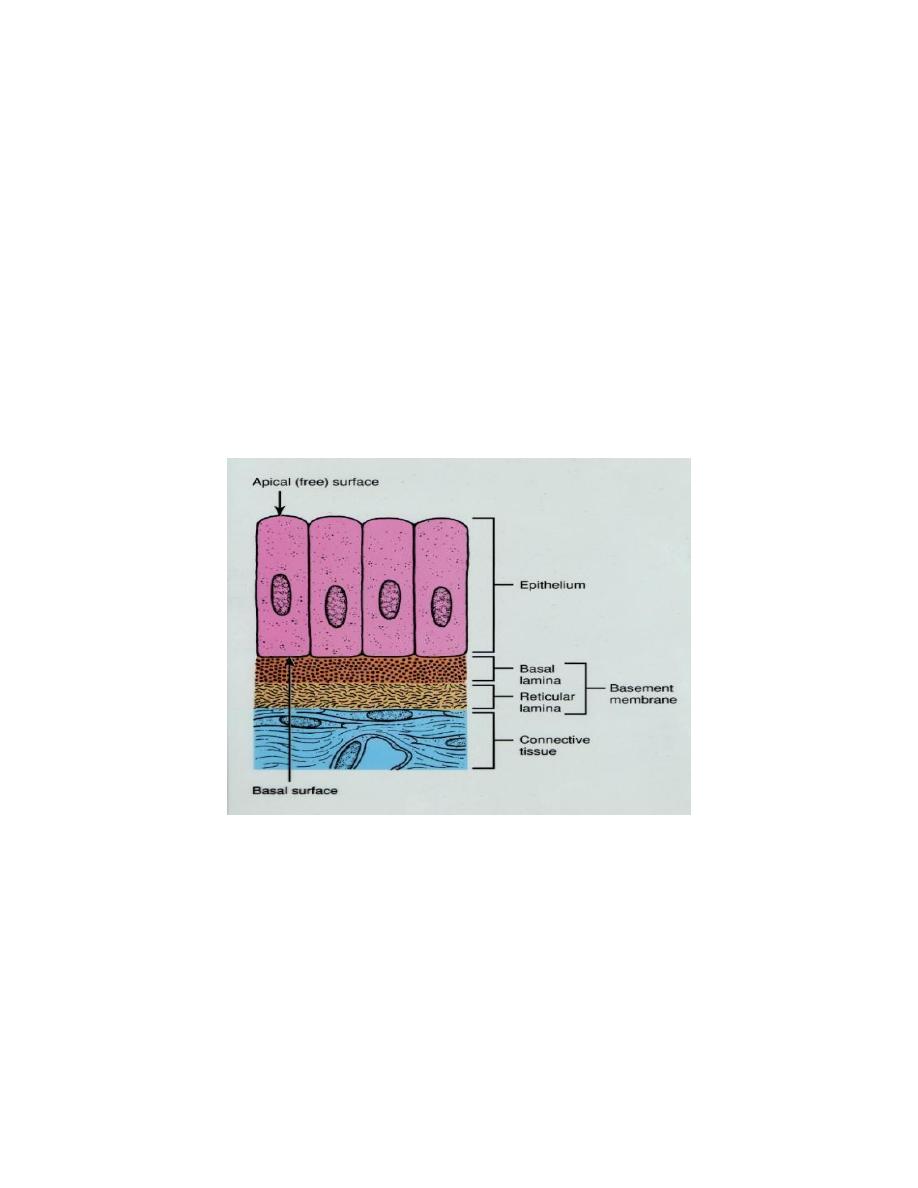
3
1. The basal lamina : The basal lamina is a layer of extracellular matrix
secreted by the epithelial cells, on which the epithelium sits. The main
components of basal lamina are type IV collagen, the glycoproteins
laminin and proteoglycan.
2. The reticular lamina : The reticular lamina located under the basal
lamina of most basement membranes. The reticular lamina consists of
reticular fibers embedded in ground substance. The components of the
reticular lamina are synthesized by cells of the connective tissue
underlying the epithelium.
The two layers (the basal lamina and the reticular lamina) are
collectively known as the basement membrane.
(The basement membrane)
Classification of Epithelia
Epithelium has two names. The first name indicates the number of cell
layers, the second describes the shape of its cell. Based on the number of cell
layers, epithelia can either be simple or stratified.
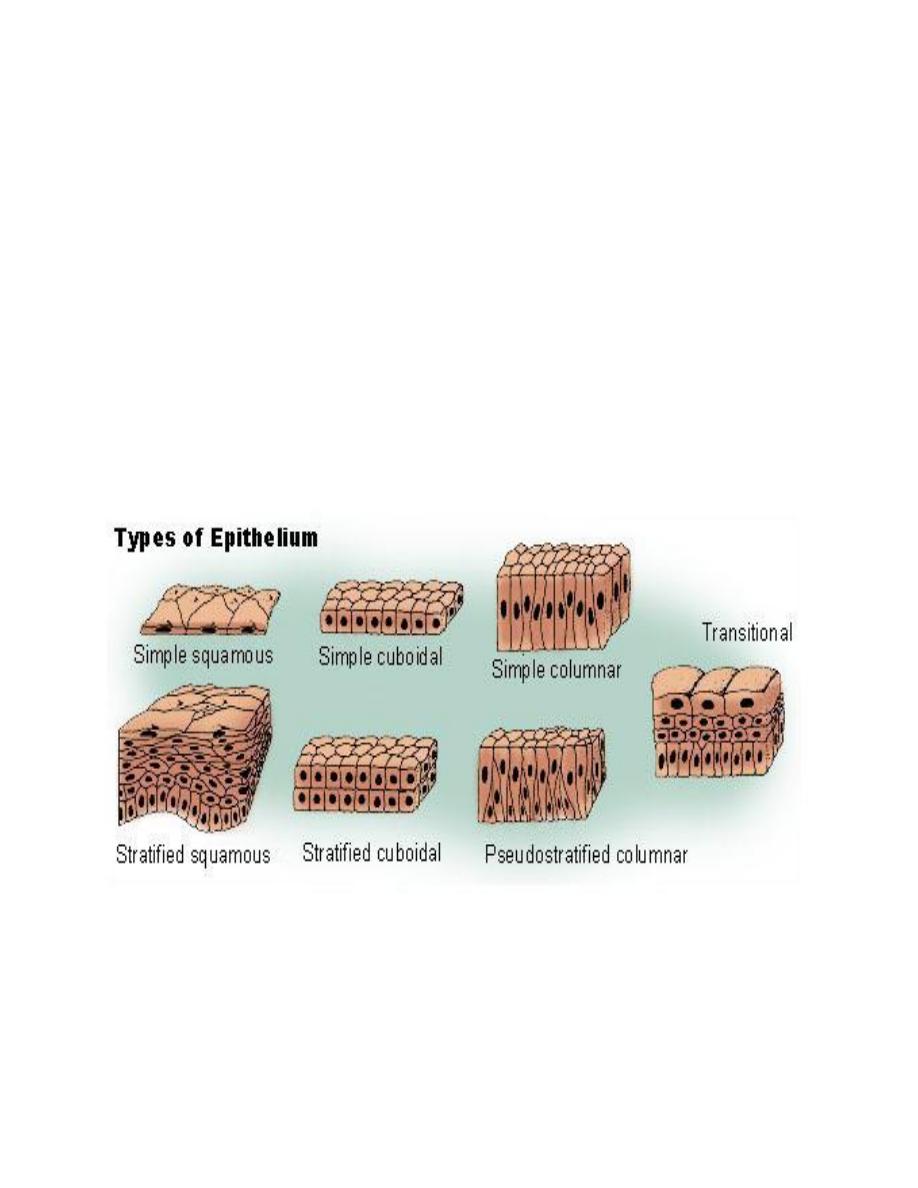
4
1. Simple epithelia– consist of a single cell layer (found where
absorption, secretion, and filtration occur).
2. Stratified epithelia– are composed of two or more cell layers stacked
on top of each other (typically found in high abrasion areas where
protection is needed).
All epithelial cells have six sides but they vary in height. For this reason,
there are three ways to describe the shape and height of epithelial cells.
1. Squamous cells– are flat and scale-like.
2. Cuboidal cells– are box-like (same height and width).
3. Columnar cells– are tall (column shaped).
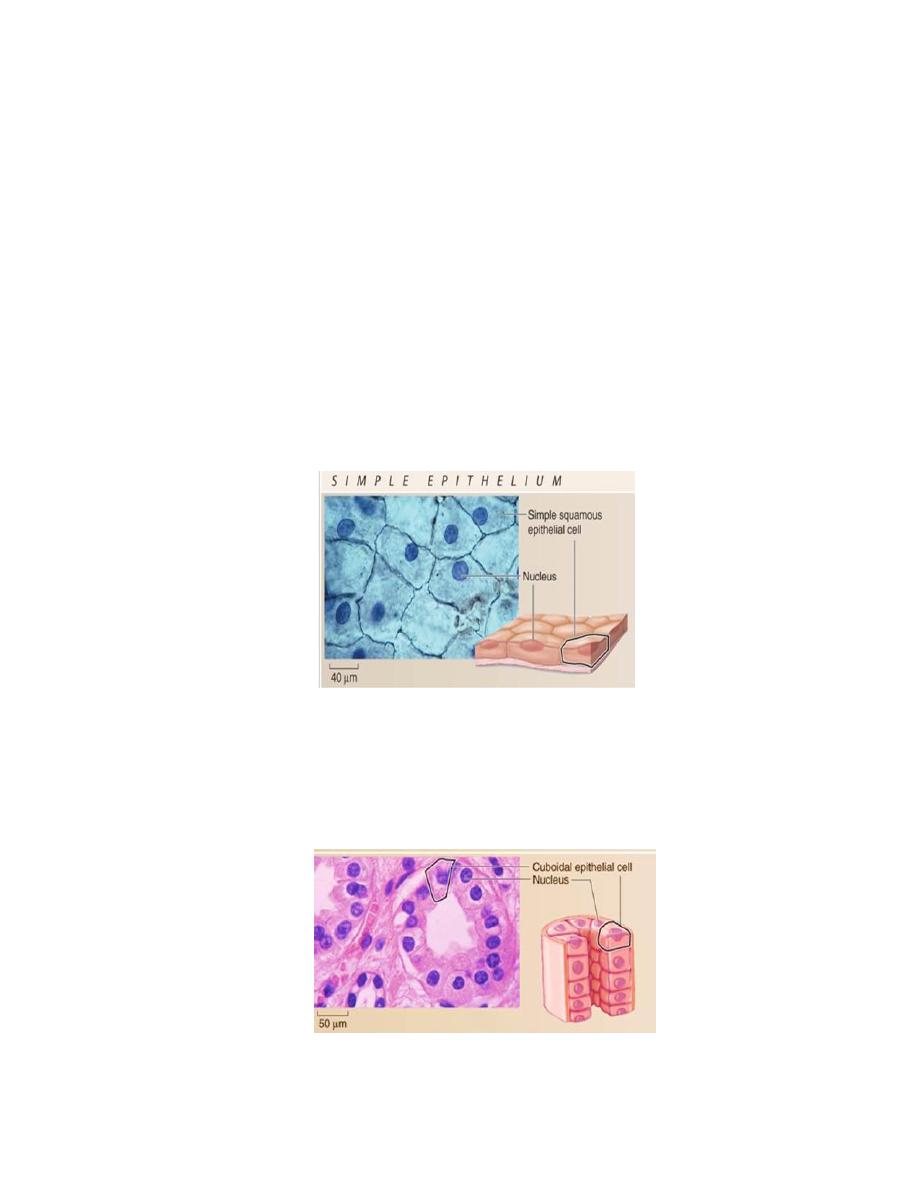
5
Types of epithelium
1-Simple squamous epithelium
Consists of a single layer of thin, flattened cells that fit tightly together
and have flattened or ovoid nuclei. It is found where filtration occurs
(kidneys, lungs) .Two simple squamous epithelia in the body have special
names reflecting their location :
a. Endothelium– provides a friction-reducing in lymphatic vessels and all
hollow organs of the cardiovascular system (heart, blood vessels,
capillaries).
b. Mesothelium– is the epithelium found in serous membranes (membranes
lining the ventral body cavity and covering the organs within it).
2-Simple cuboidal epithelium
Consists of a single layer of cube-shaped cells that usually have centrally
located, spherical nuclei. Functions include secretion and absorption (located
in small ducts of glands and kidney tubules).
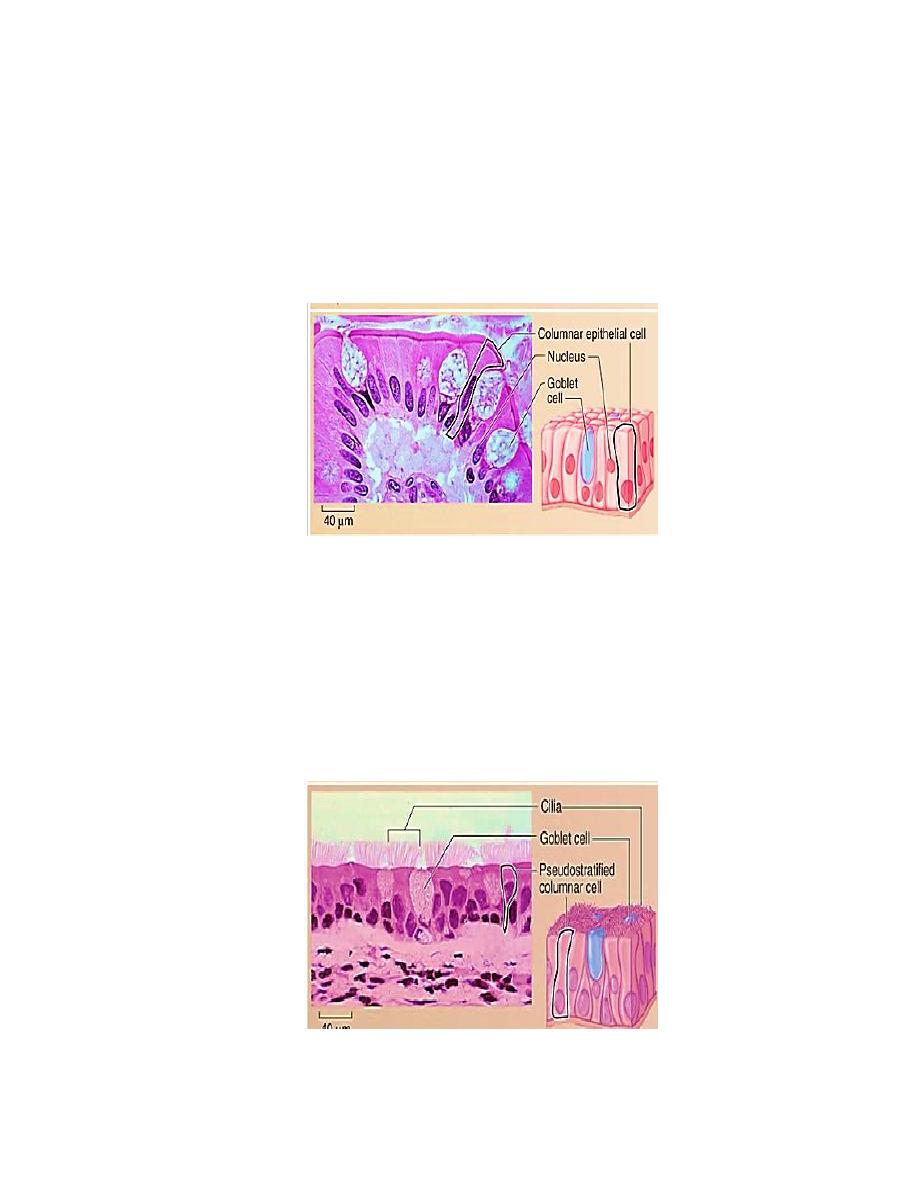
6
3-Simple columnar epithelium
Consists of a single layer of elongated cells that have oval nuclei usually
located near the basement membrane. Some cells of simple columnar
epithelium can be covered with cilia or microvilli . Simple columnar
epithelium may contain mucus-secreting unicellular gland (goblet cells).
Simple columnar epithelia line the digestive tract from the stomach to the
rectum. Functions include absorption and secretion.
4-Pseudostratified epithelium
All of their cells rest on the basement membrane and only the tallest
reach the apical surface. When viewing pseudostratified epithelium it may
look like there are several layers of cells, but this is not the case. (because
the cells have different heights, it gives the illusion of multiple cell layers).
Most pseudostratified epithelia contain cilia on their apical surface and line
the respiratory tract.
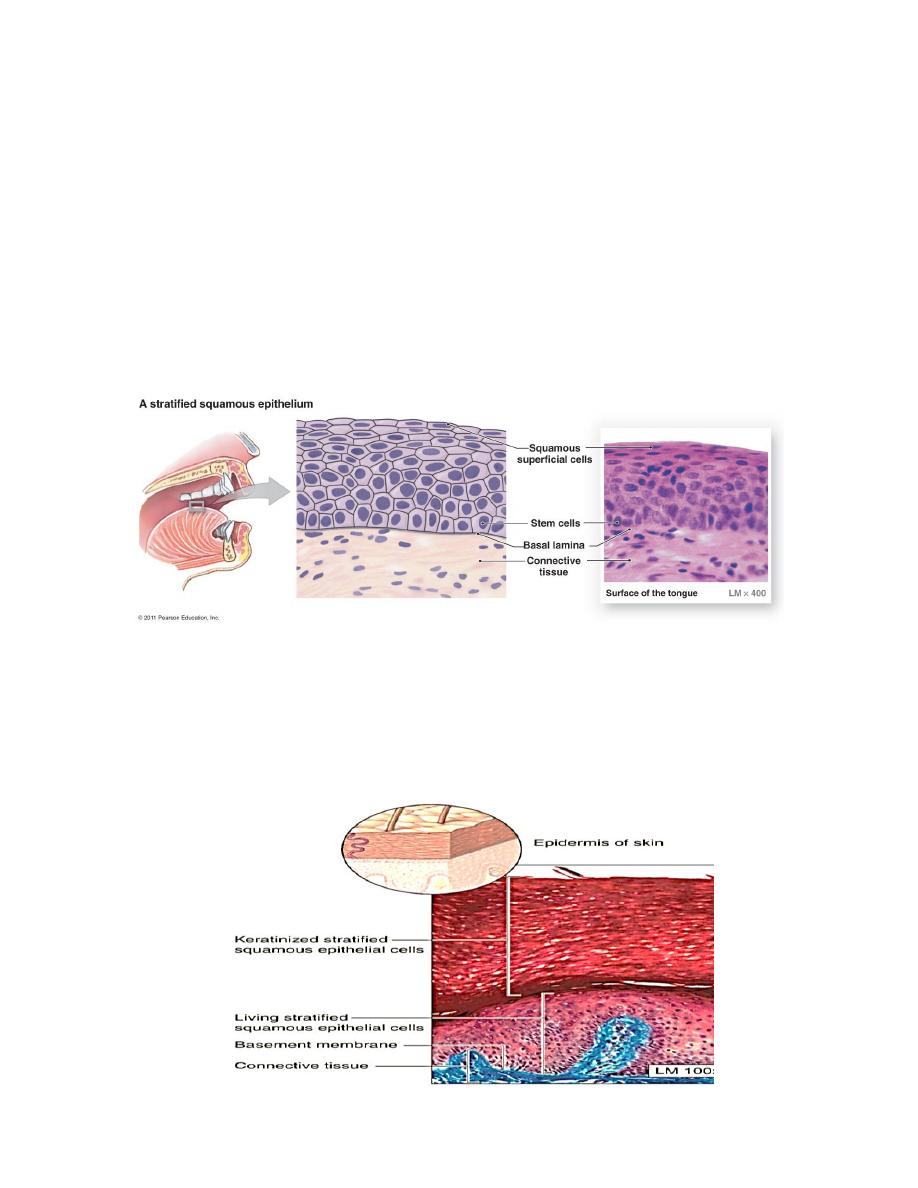
7
5-Stratified Squamous Epithelium:
a. Stratified Squamous (Non keratinized) Epithelium
Stratified Squamous (Non keratinized) Epithelium tissue is thick, because
it is composed of several layers of cells, only the deepest layer is in contact
with the basal lamina. The most basal cells are cuboidal in shape, those
located in the middle of the epithelium are polymorphous and the cells
composing the free surface of the epithelium are flattened (squamous).This
tissue is not contain keratin and the surface cells are nucleate. It's found
lining the mouth, pharynx, and esophagus.
b. Stratified Squamous (keratinized)Epithelium
It is similar to stratified squamous (None keratinized) epithelium except
that the superficial layers are composed of dead cells whose nuclei and
cytoplasm have been replaced with keratin, a tough layer that resists friction
and is impermeable to water.
This epithelium constitutes the epidermis of
skin.
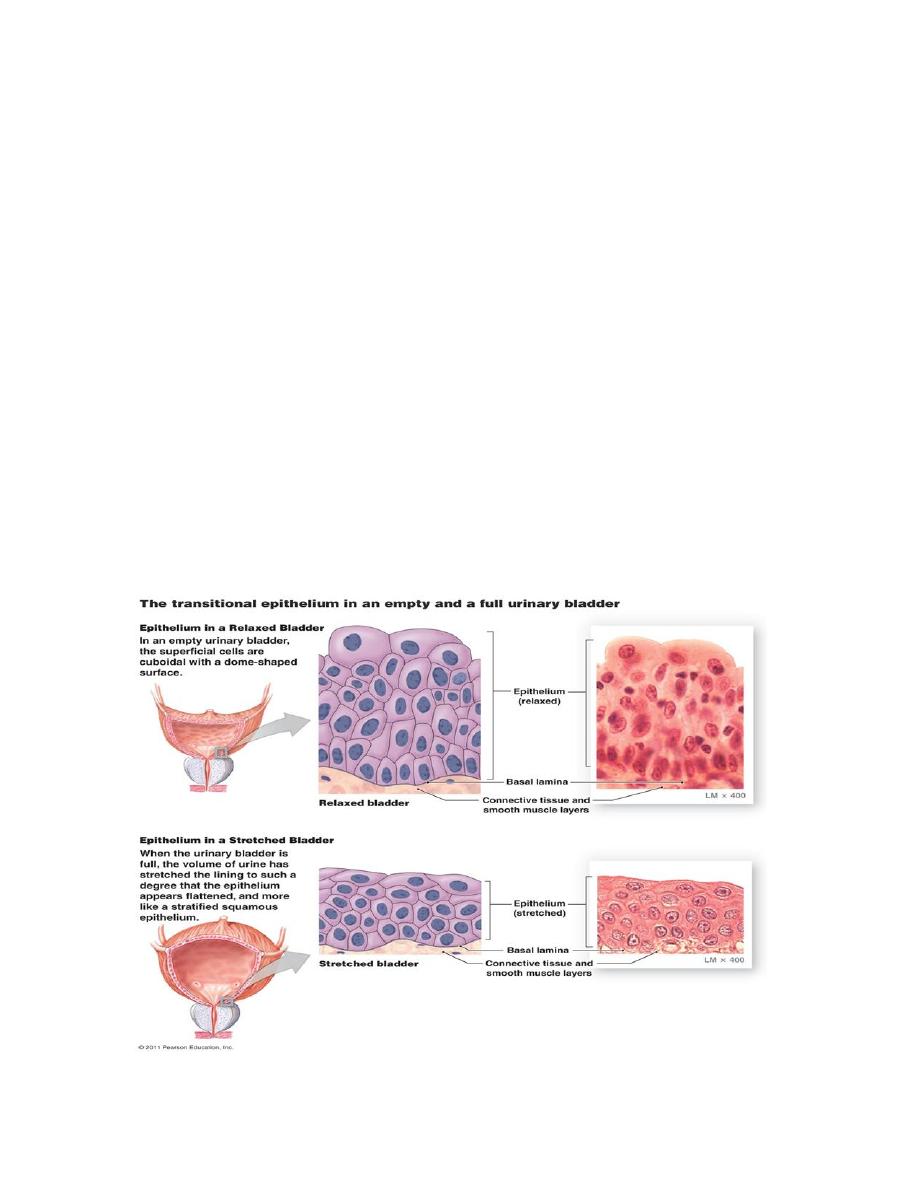
8
6-Stratified cuboidal epithelium
Is somewhat rare in the human body. It’s mainly found in the ducts of
glands (sweat glands, mammary glands) and is typically has two layers of
cuboidal cells.
7- Stratified columnar epithelium
Is also rare in the human body. Small amounts are found in the pharynx,
male urethra, and lining of some glandular ducts. Stratified columnar
epithelium occurs in transition areas (junctions) between other epithelial
types.
8- Transitional epithelium
This epithelium located exclusively in the urinary system. Transitional
epithelium is composed of many layers of cells those located basely are
either columnar or cuboidal cells. Polyhedral cells compose several layers
above the basal cells, the most superficial cells of the empty bladder are
large, occasionally bi nucleated and exhibit rounded dome tops . These
dome-shaped cells become flattened and the epithelium becomes thinner
when the bladder is distended.

9
